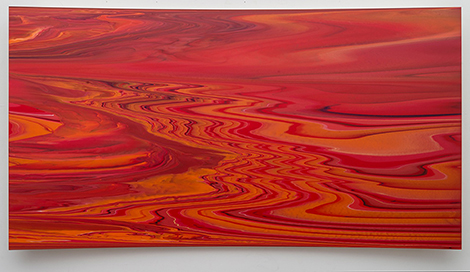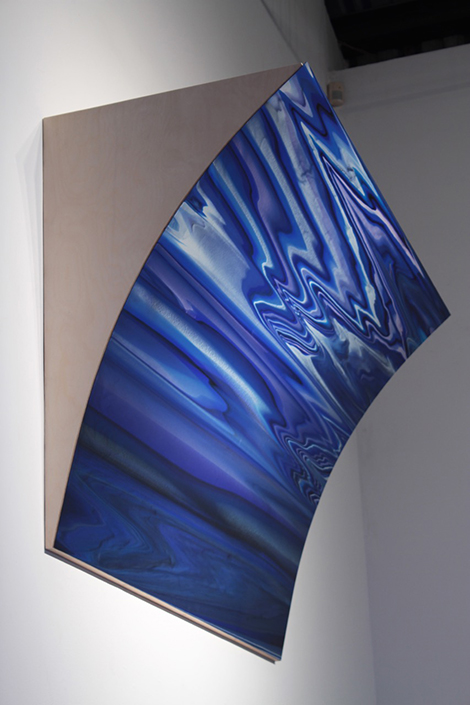Geomorphology—the study of the evolution and formation of Earth’s topographic and bathymetric features—forms the basis of Andy Moses’ new work at William Turner. Moses has taken his cue for these paintings from the richly complex formations of the Earth’s surface that continue to erode and shift over time—much as a painting continues to transform in the mind of the viewer long after the initial encounter. The beauty of these luminous paintings—abstractractions of jagged and weathered rock formations—lies in how they appear effortless as though they have sprung fully-formed from the Earth or the sea.
Though these paintings appear similar in terms of color, shape and movement, Moses manages to make each image distinctive like a separate voice within a larger more comprehensive chorus of forms. All of the works are composed of singularly bright colors, made from acrylic on Lucite, mounted on wood panels. The works achieve a fantastic and vigorous dynamism as well as a kind of implied multidimensionality, not only through the application of paint and complex movements reflected within the images, but also because the panels themselves are object-like and appear at times like writhing sculptures. In some cases, as with R.A.D. 1001 (all works 2014), the painting is a sculpture that slopes away from the wall like a wave crashing to shore. These allusions to the ocean are well-earned, and rather than appearing arbitrary, the wave-like patterning evident in all of the paintings sustains a narrative of energy and movement like the ocean, mimicking water’s shifting constellation of darkness and light. Moses uses color to punctuate the energy of these vibrant works. This is particularly effective in the lighter colored panels like Geomorphology 1402 where orange and yellows converge and amalgamate simultaneously.
Though these works are not representational, traces of natural phenomenon illuminate Moses’ interest in drawing tension between abstraction and representation. Moses’ artistic process is labor-intensive and involves extensive mixing and pouring techniques, and it is this intensive process that mimics the unpredictability of nature as spills occur and shapes take on new life. The paintings are reminiscent of works by the color field abstractionists like Helen Frankenthaler, whose pouring techniques were considered pioneering in the late 1950s, or even Jackson Pollock, whose storied drip paintings express a frenetic energy. Yet, Moses’ work is not pure abstraction. His references to large-scale geologic forms suggest a planetary or even cosmic orientation. All told, Moses paints like he means it, and the rich, pristine surfaces of these paintings attests to this commitment.



